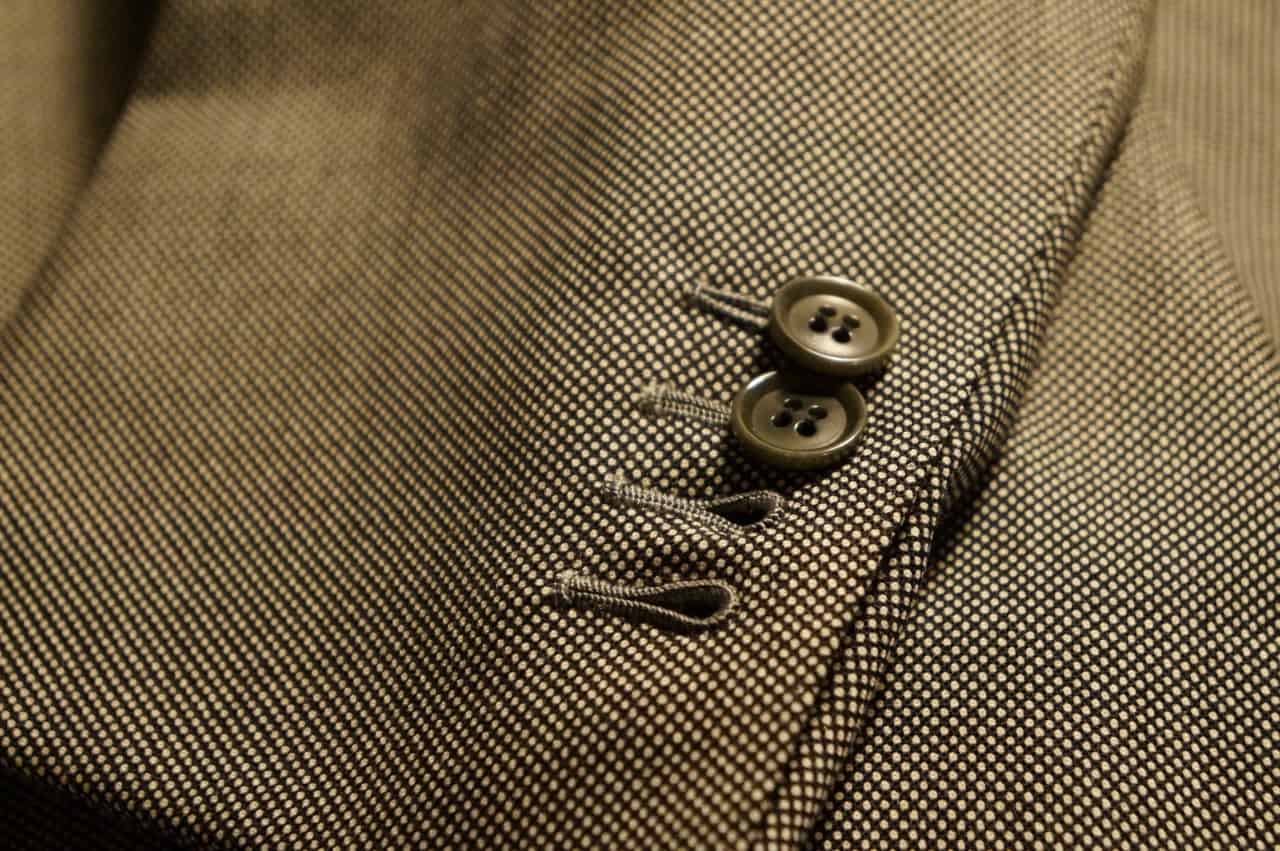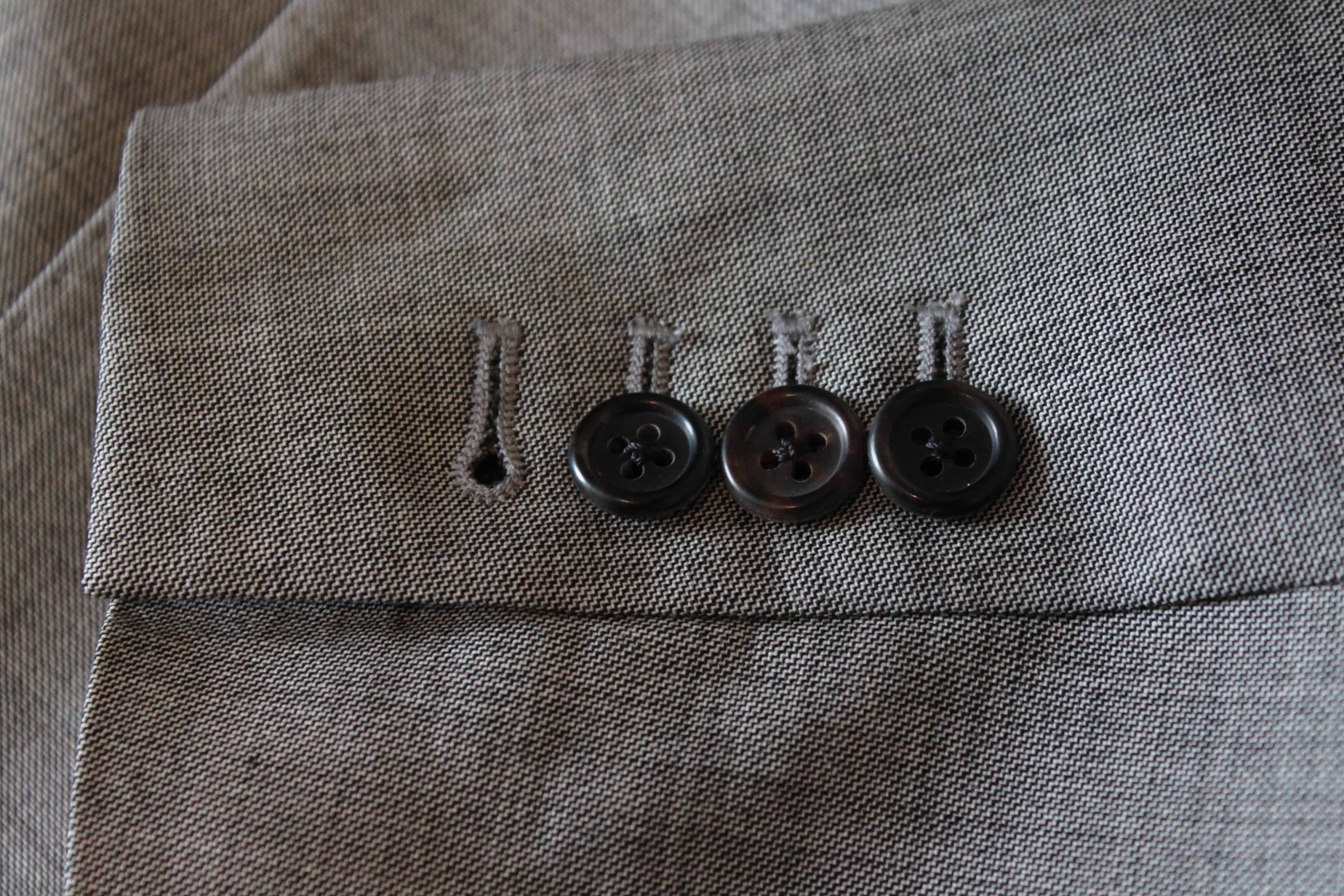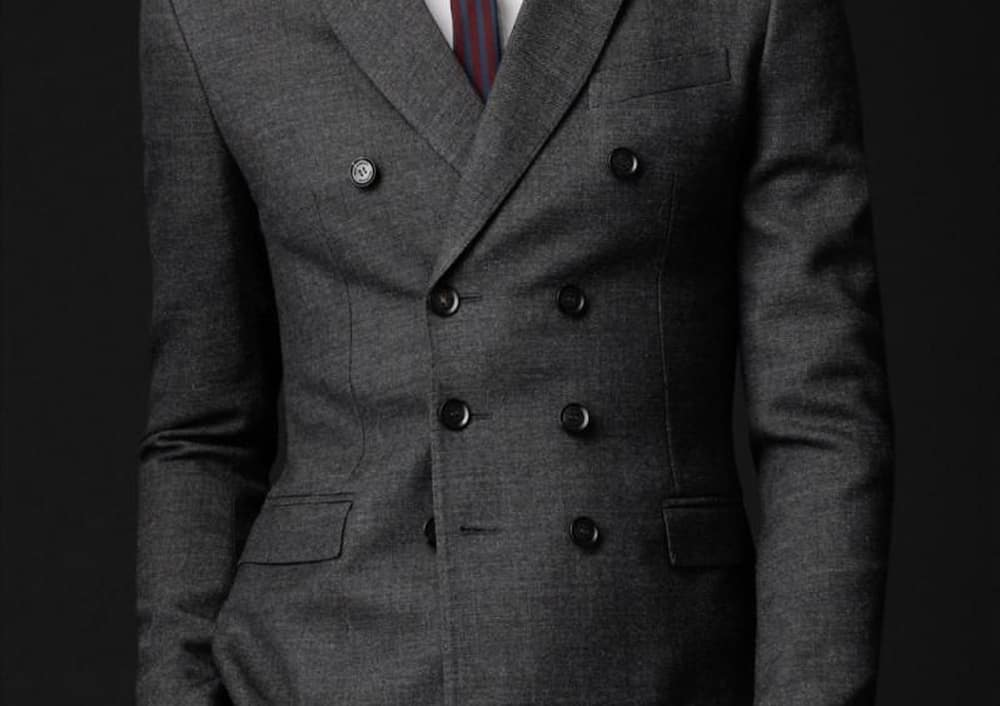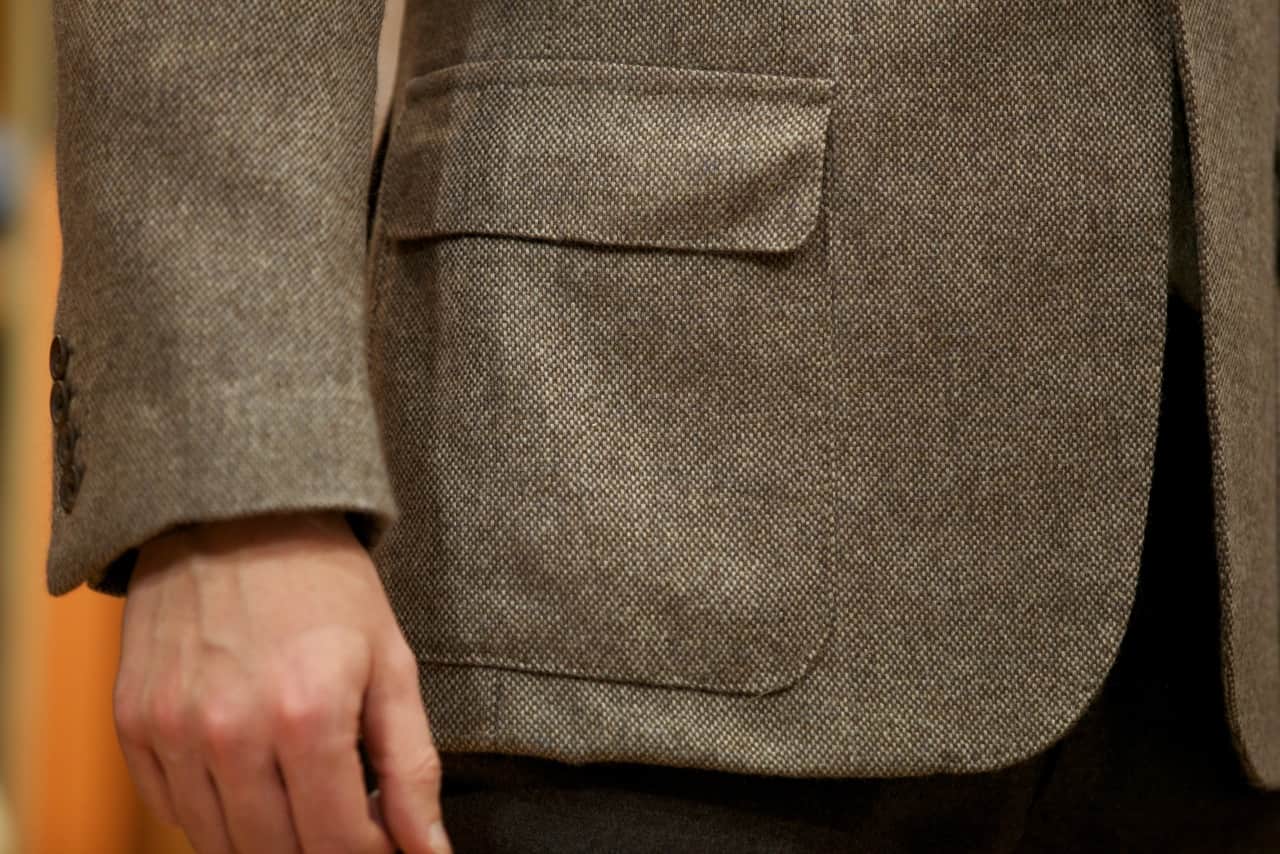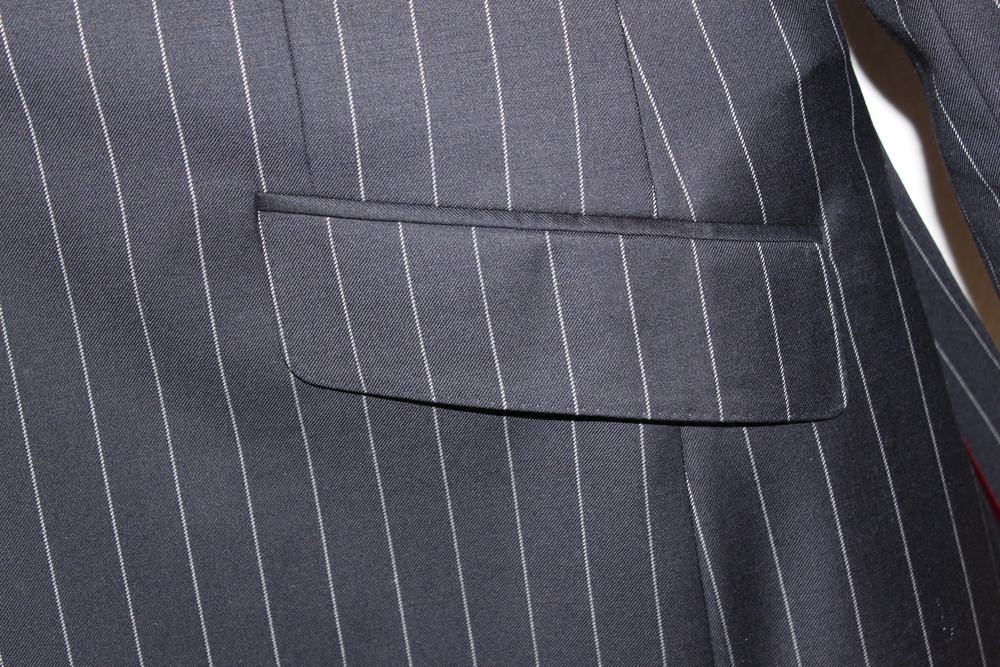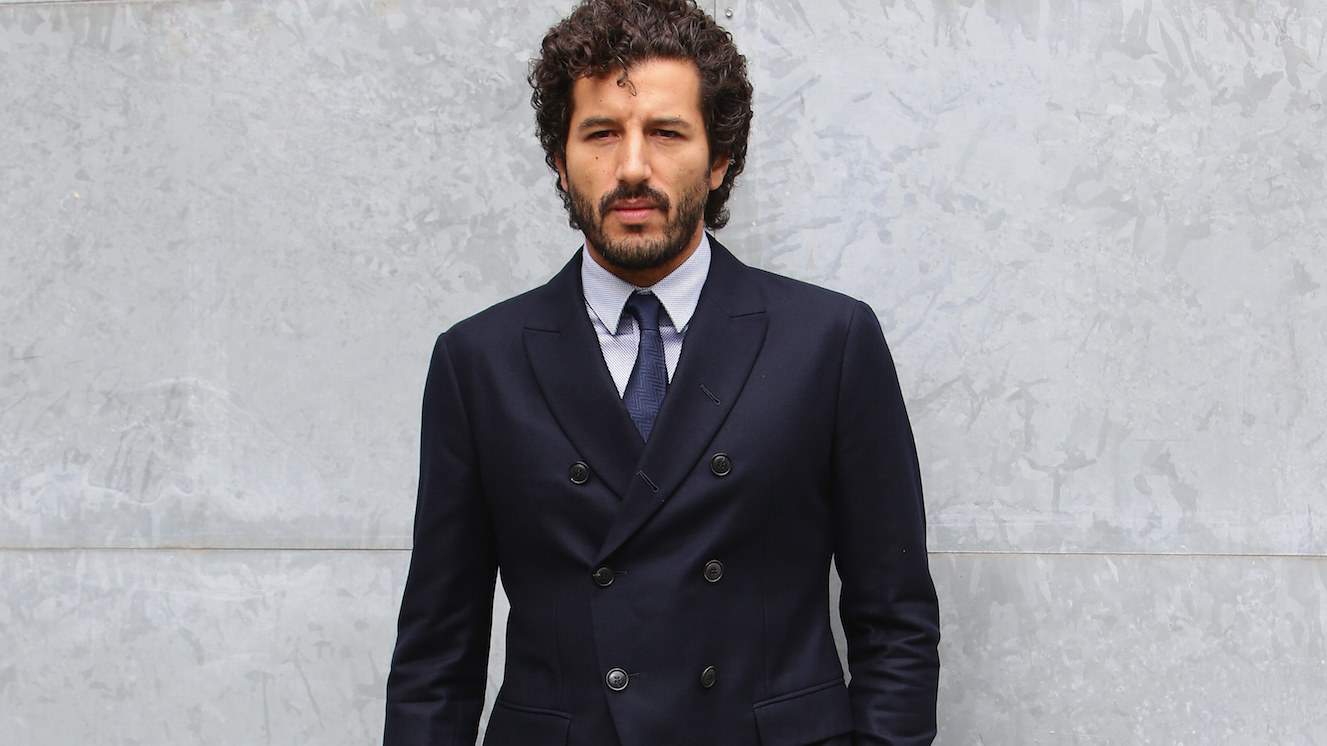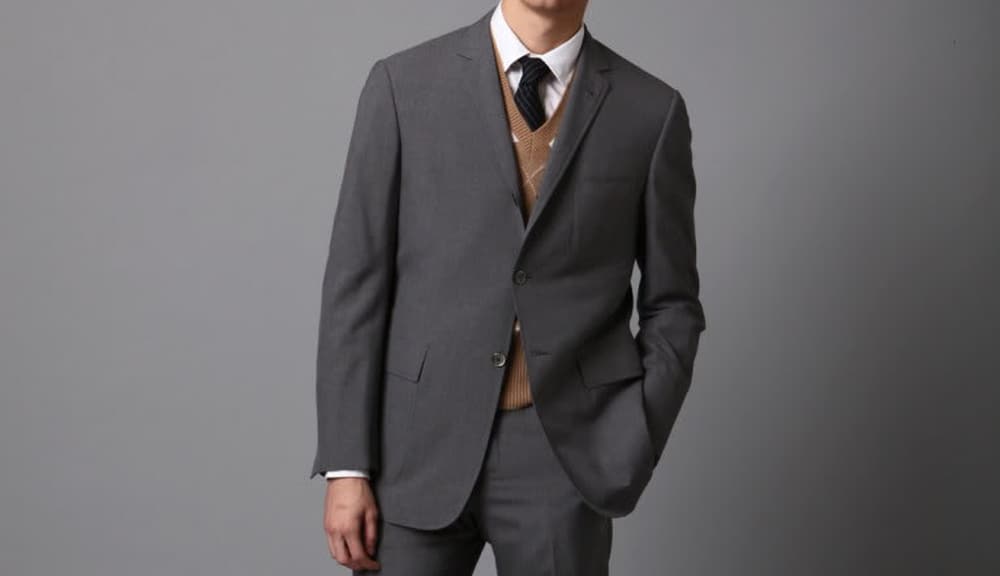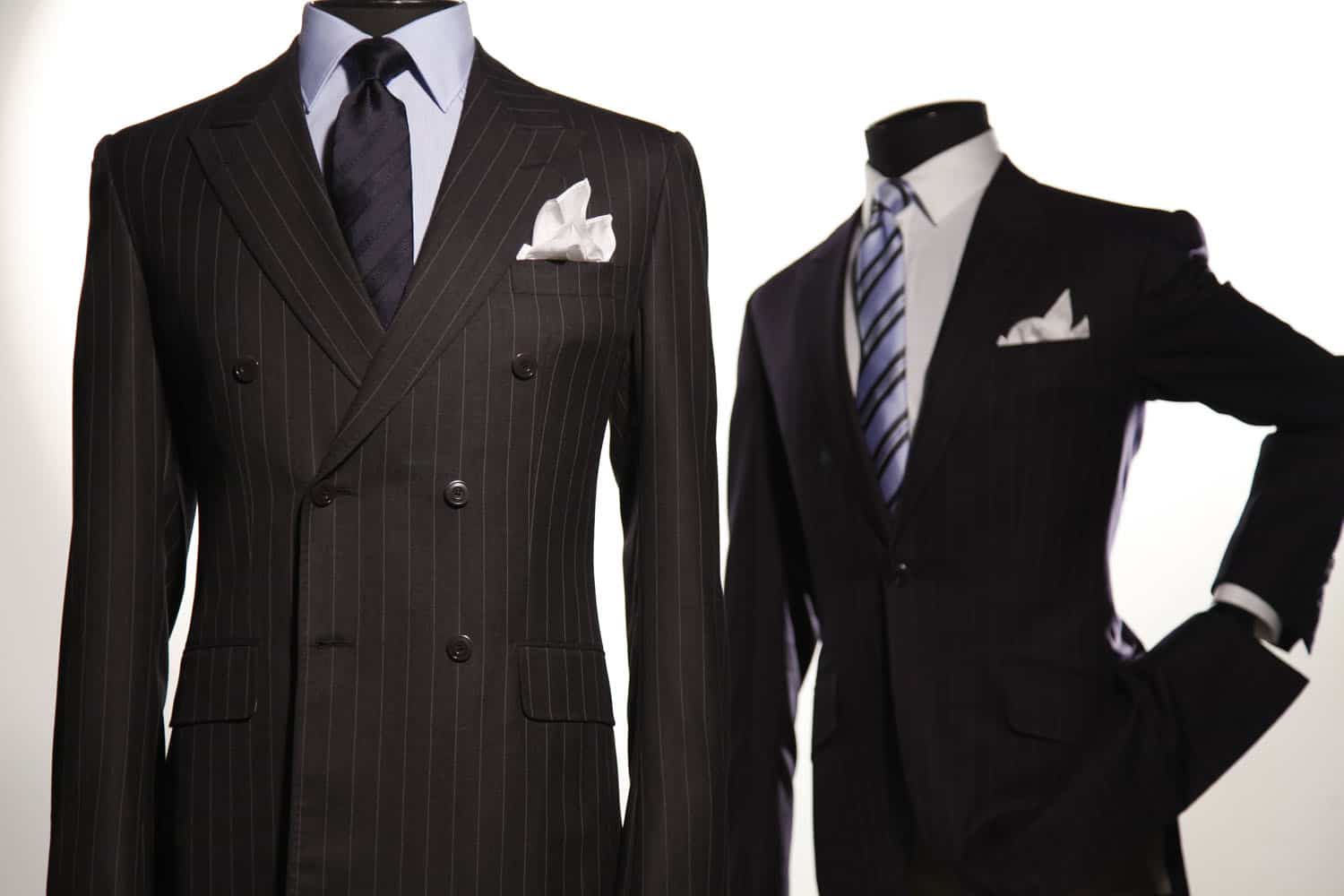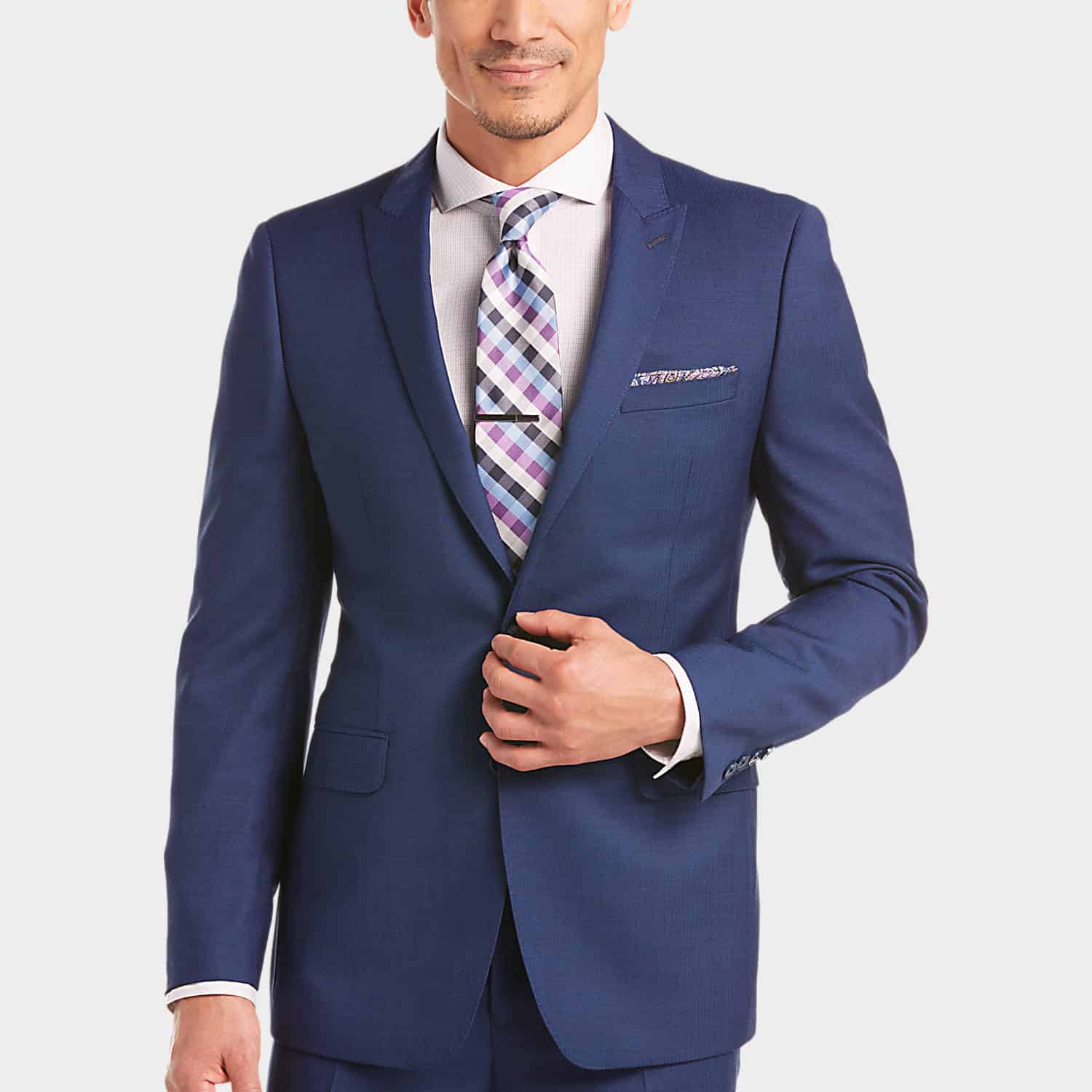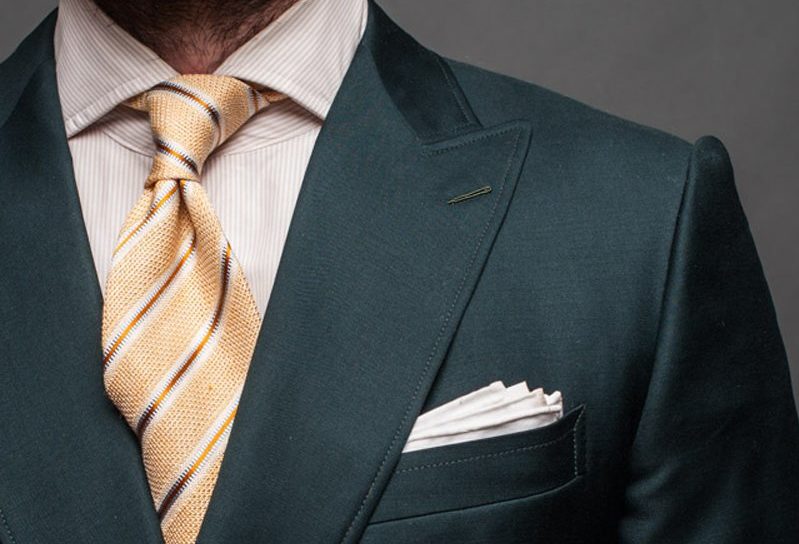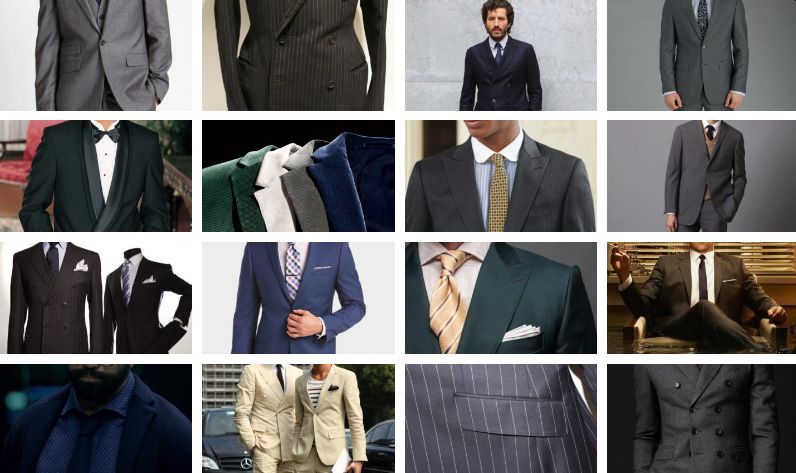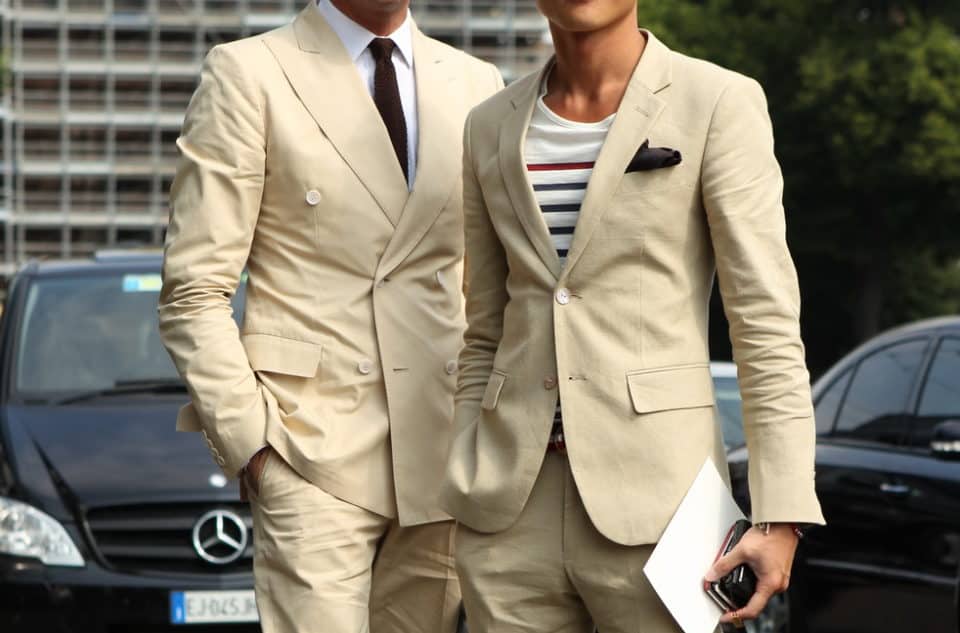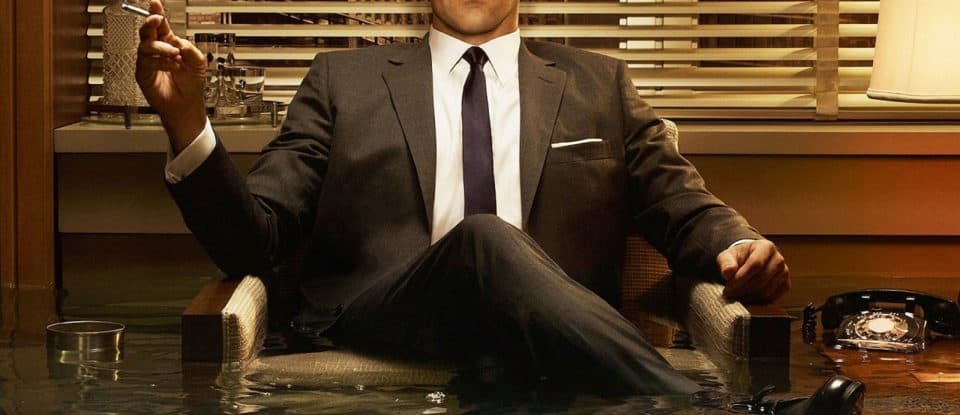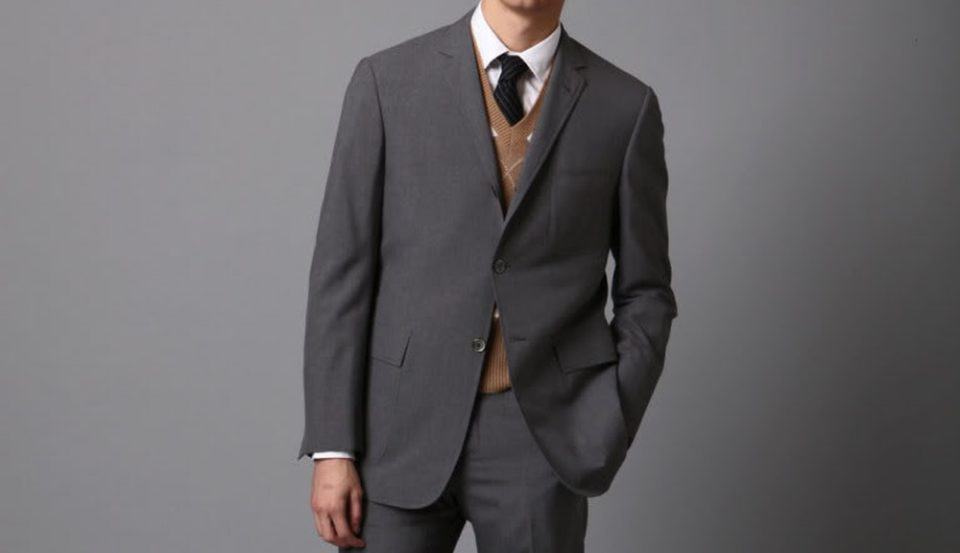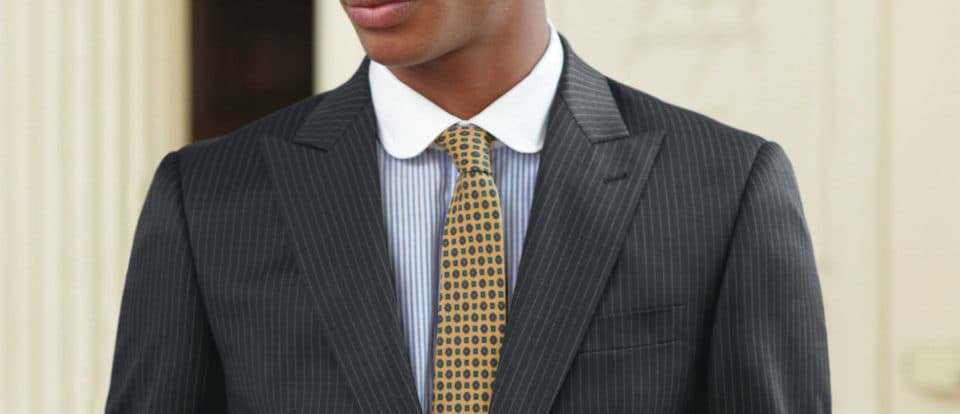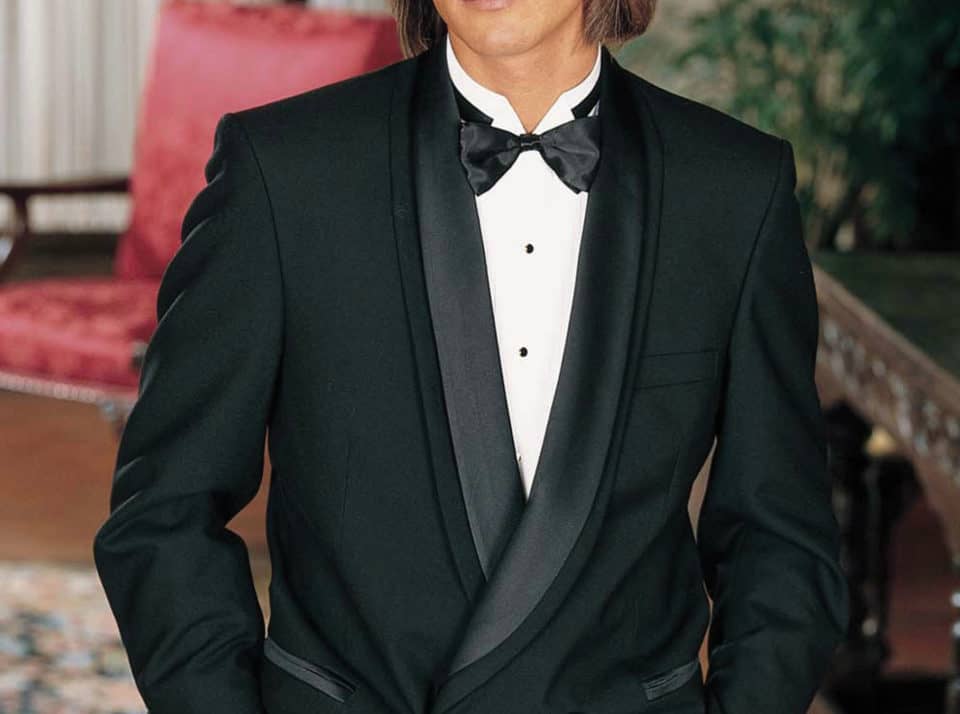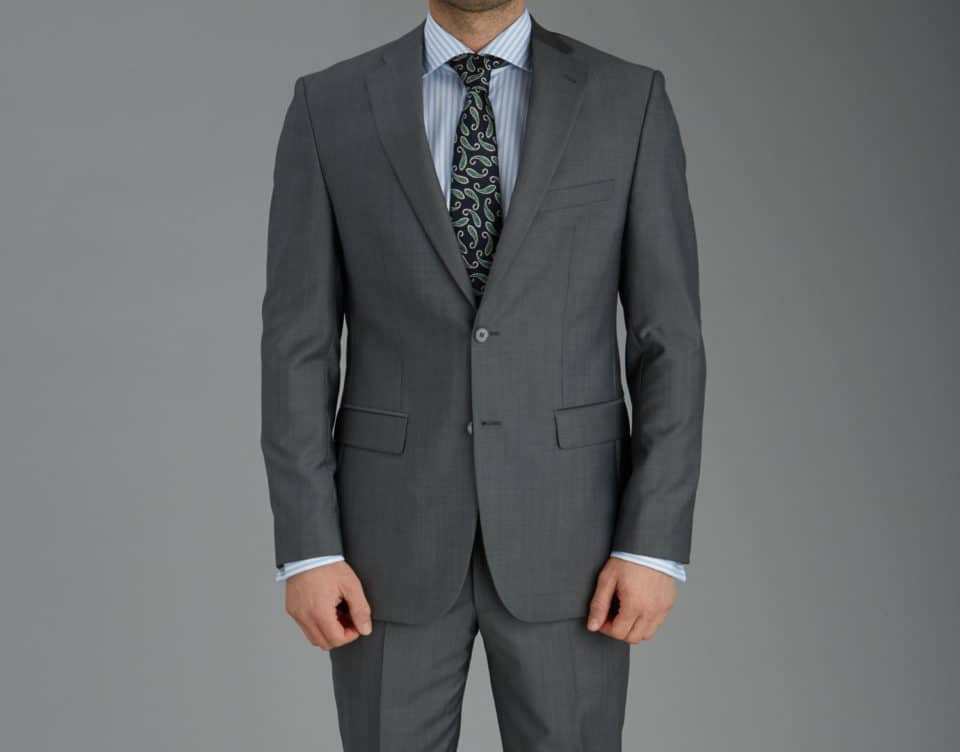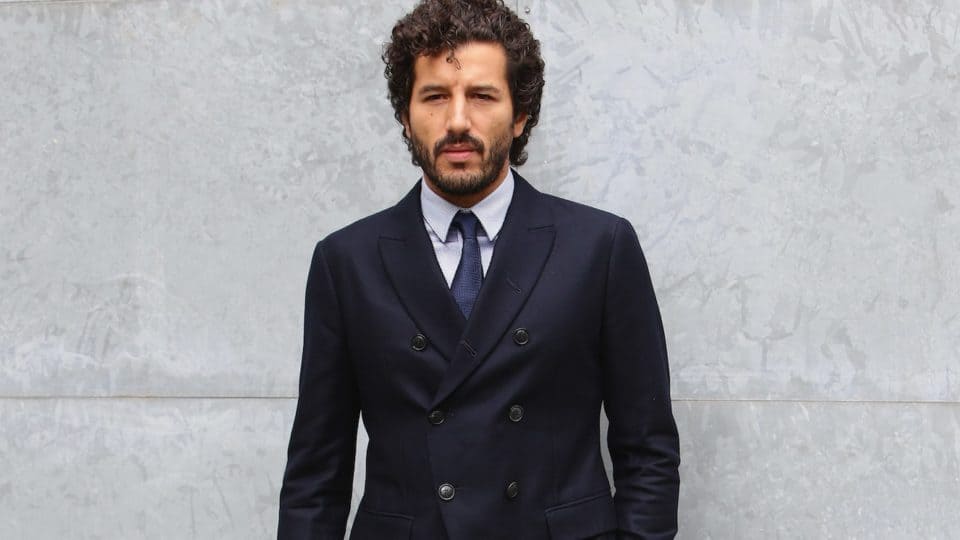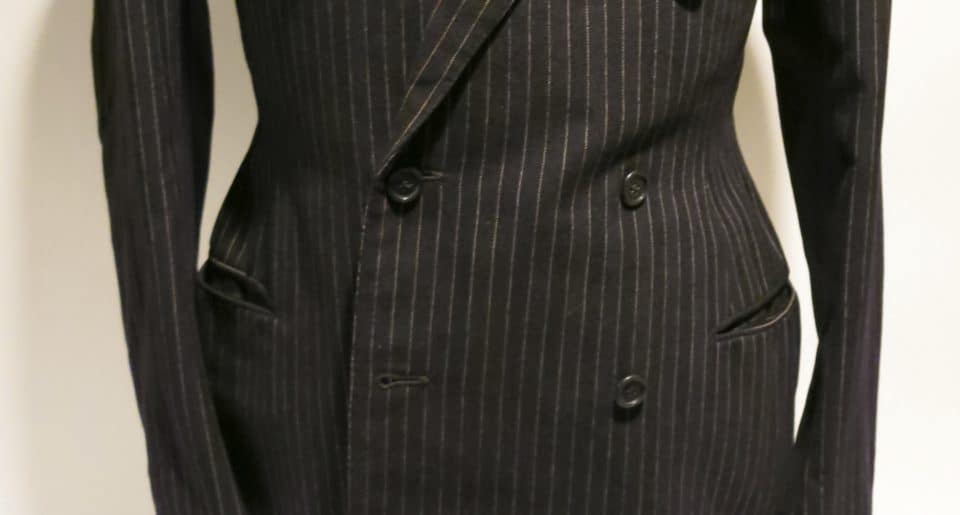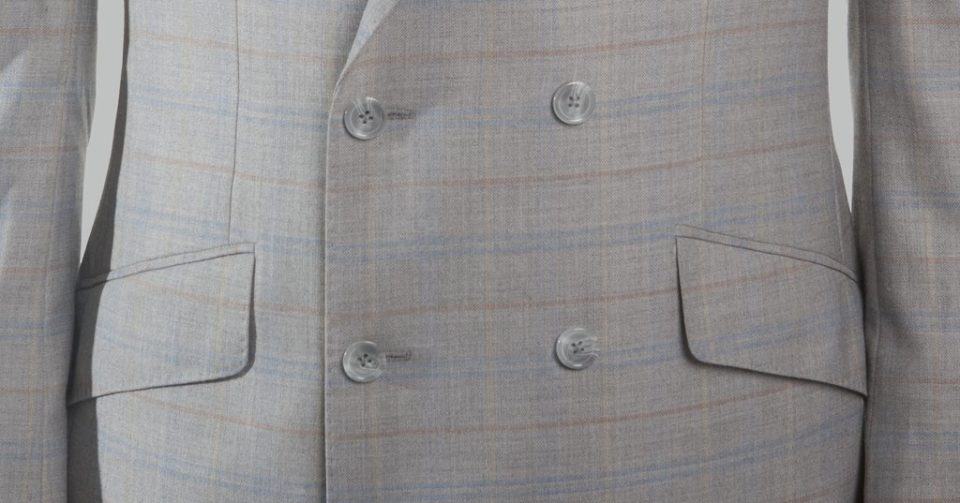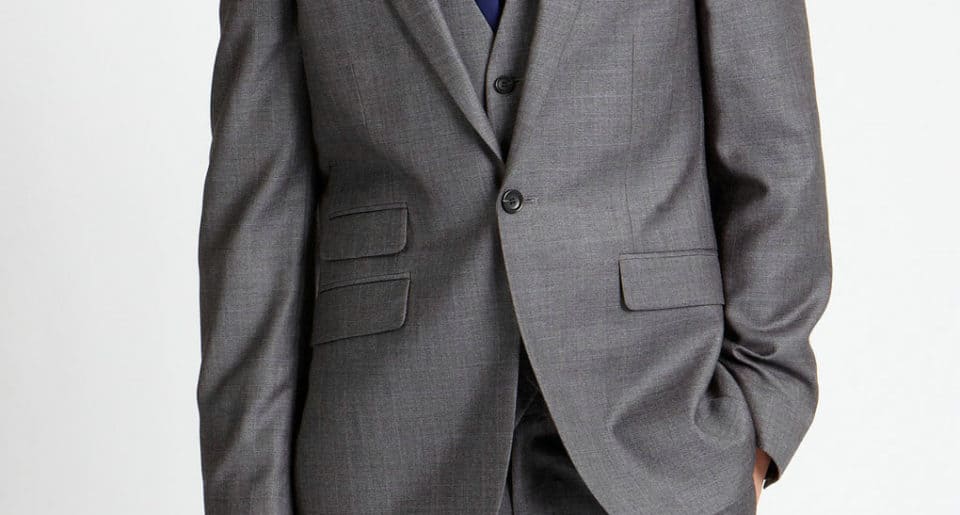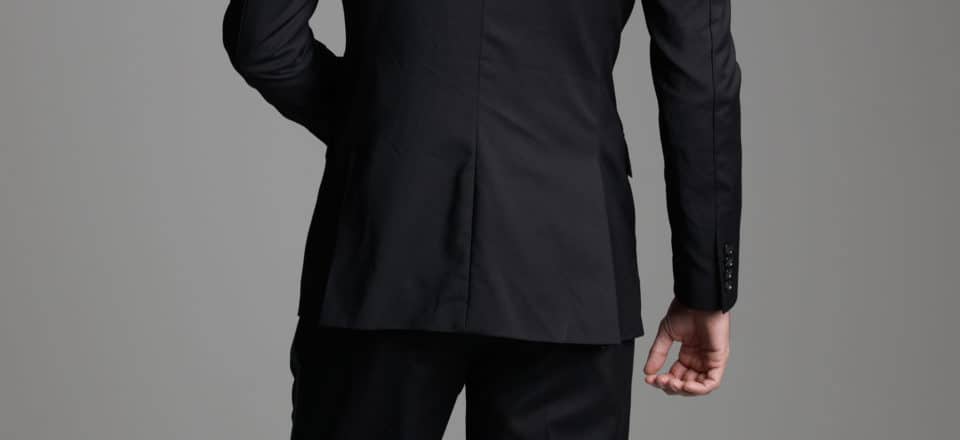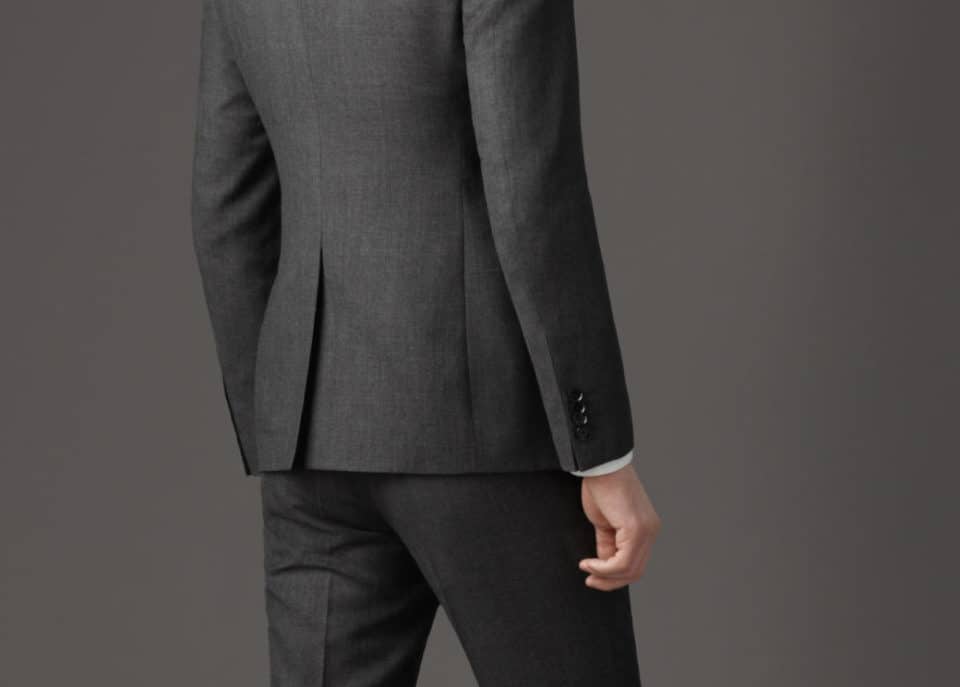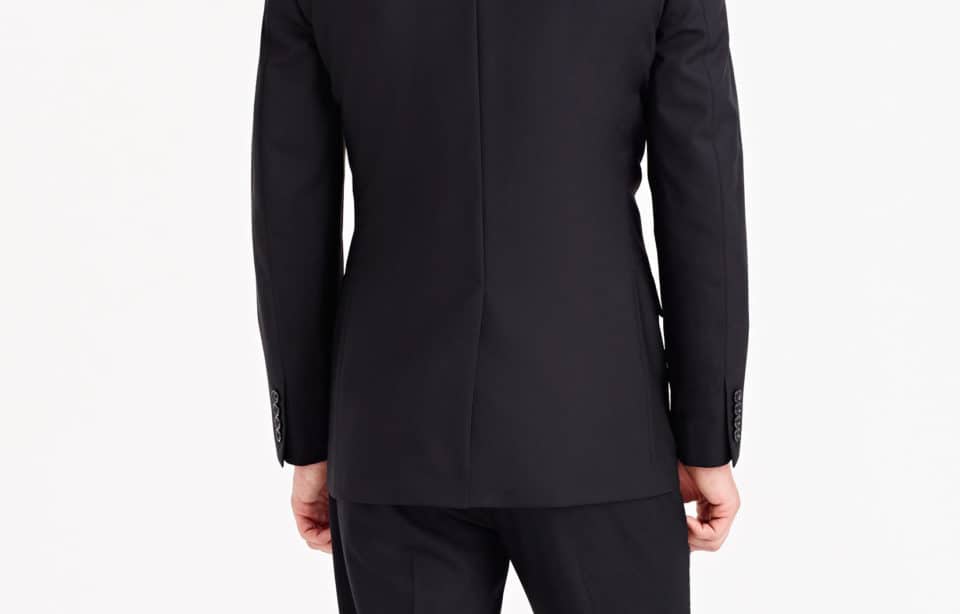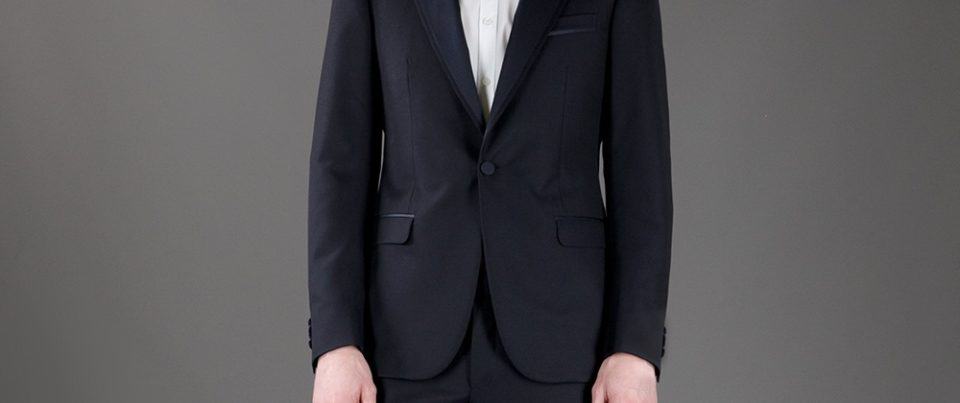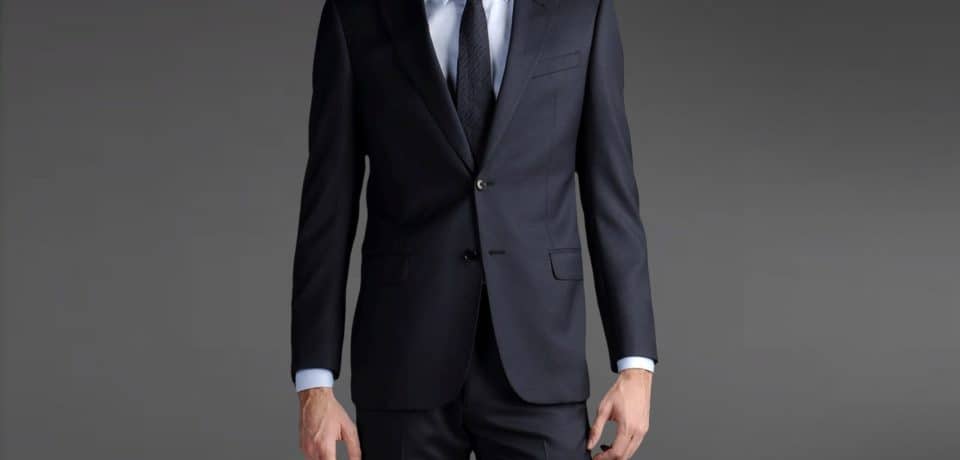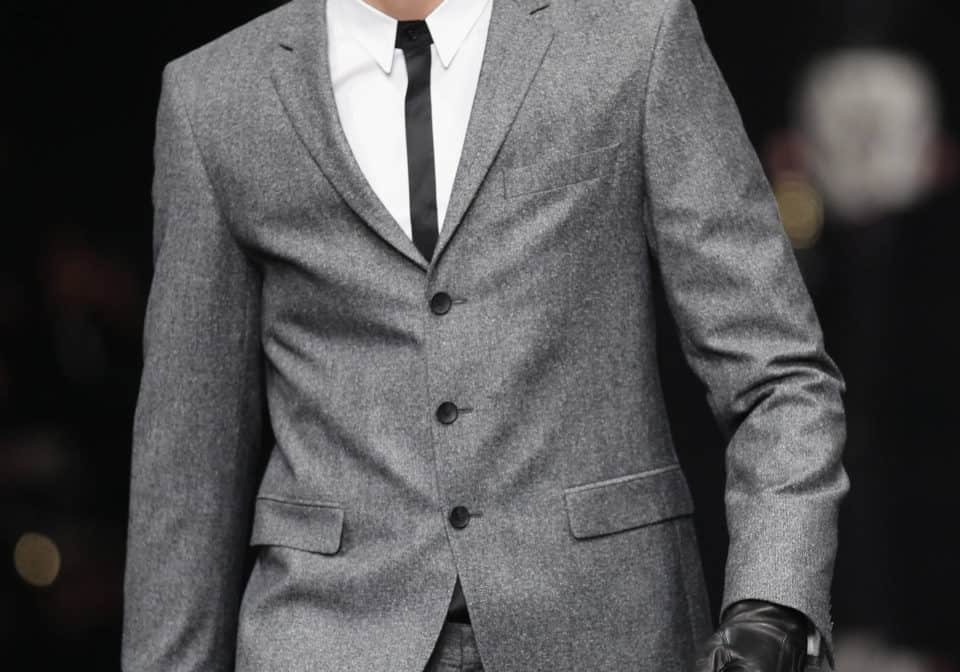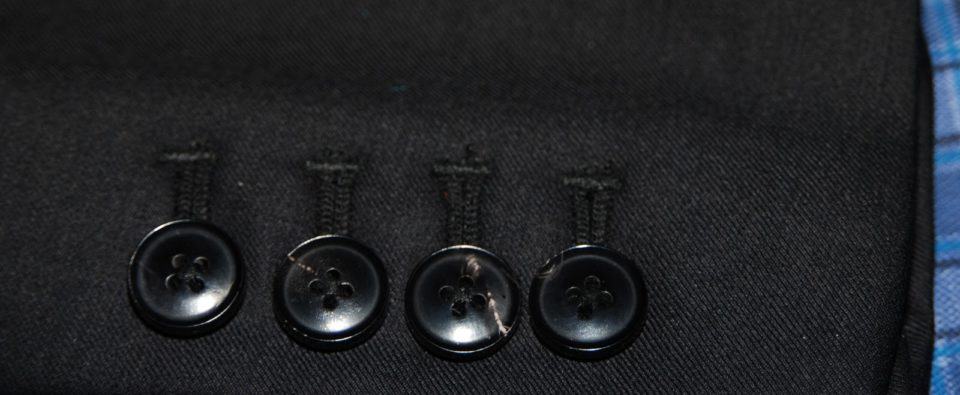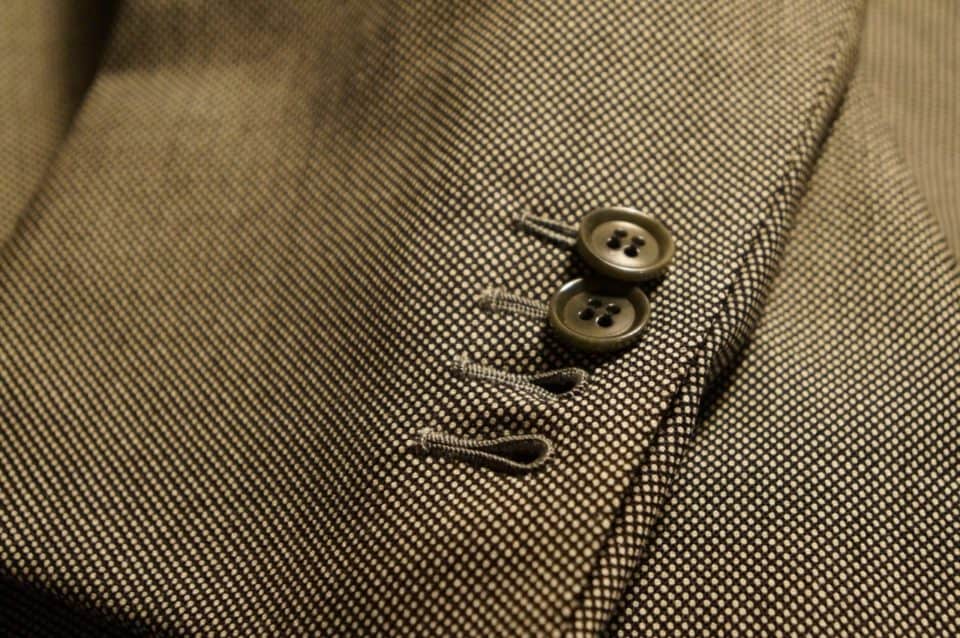View in galleryRelated Reading: A Guide to Button Down Collar Shirts
Suit Differences
Most suits differ by how the jacket is made, since a pair of pants are generally nothing more than a pair of pants. To most of us, if it has lapels, isn’t missing any buttons, and can go around our body, it’s good enough to pass the sniff test, and qualifies as a “good” suit. This is absolutely not correct, which is the first thing we have to learn as men. Just because it looks like a suit and acts like a suit doesn’t make it quality, it just makes it barely clear the bar. The differences between suits is actually night and day once you know that you’re looking at the number of buttons on the body and the sleeves, the style of vents, the cut of the shoulders, the lining, the pocket arrangement, the kind of lapels, and even the button-hole that may or may not reside on those lapels. It’s these items that we’re going to cover, so that you know what each piece means for you.
Shoulders
The first thing you should notice about a suit jacket: The shoulders must fit you properly. All the alterations in the world done by the finest tailor in Italy won’t give you a proper look if the shoulders don’t work. You should have unrestricted movement of your arms and the line should follow your body without pads sticking out. There’s a multitude of shoulder styles, with three major lines of demarcation: sloped, straight, and roped
Sloped
The most American style, these roll off the edge of the body.
Straight
Very English, the straight shoulder creates a more angular shape to the shoulder, often using pads to pump it up and breaking sharply between shoulder and sleeve.
Roped
Popular in France and Italy, roped shoulders are generally the mark of a true hand-made suit, though many manufacturers replicate it. This shoulder type is marked by a little puff with pleats where the sleeve seam hits the shoulder.
Silhouettes
This refers to the shape of a suit and comes in three basic looks: fitted, structured, and sack.
Fitted
Built to minimize the amount of fabric between you and the world, the fitted style has high arm holes that help show off your physique. If you don’t have a physique to show off, skip it.
Structured
Padded shoulders and a slim waist help create a more masculine appearance, even if your own body is not. More formal than others and almost always seen on double-breasted suits.
Sack
The suit cut for blending in, this is meant to round the shoulders and then hang around the body to blur the lines and create a minimalistic appearance.
Lapels
The lapels are the folded fabric that surround the neck and chest opening of a suit jacket. These come in three styles: peak, notched, and shawl.
Peak
Heavily pointed toward the shoulders, peak lapels are more formal than notched or shawl, and always bear a boutonniere button-hole.
Notched
Think of notched lapels as business class. These are found on most business suits as they are neither too formal nor too casual. You won’t typically find them on a tuxedo, but on workaday wear.
Shawl
The most casual, shawl lapels are relatively rare on suit jackets, being reserved more for casual blazers and smoking jackets. They almost never have a button-hole, since they’re intended for lounging, not dressing to impress.
Breasts
The two most notable suit types are the double and single-breasted. These are easily distinguished based on the buttons.
Single
A mirror image jacket that is two halves sewn together and closed with one to four buttons in the exact center, these are the most common type of suit available. They often have notched lapels.
Double
A bigger, bolder suit statement, the double-breasted suit has the more flashy peak lapels, and six to eight buttons on the front. Instead of closing directly in the center, double-breasted suits button on one side, usually the wearer’s right. These have more fabric and cut a bigger, bolder frame. They’re more formal than single-breasted suits and worn to make a statement.
Pockets
Believe it or not, there’s a full 5 types of suit jacket pockets, with some designers trying to add more all the time. Your standard suit will likely be outfitted with a jetted, flap, angled, ticket, or patch pocket.
Jetted
The height of formality, jetted pockets have no flap and are considered the most formal due to their sleek look. These are common on tuxedos.
Flap
Business attire, the flap pocket is little more than a jetted pocket with a flap over it to keep out weather.
Angled
Angled pockets are flap pockets that are cut at a sloping angle for faster access and are usually reserved for sport coats.
Ticket
When you see additional pockets besides the standard ones for your two hands, those are ticket pockets and were built for holding tickets to trains or sporting events.
Patch
The most casual, patch pockets look like they were sewn on as an afterthought and are easily the most casual of the suit pockets.
Vents
Suit vents come in the double and single vented, as well as ventless.
Double Vents
The most attractive option as it keeps the lines of the suit in place during movement or putting hands in pockets, it also doesn’t expose your rump.
Single Vent
Cheap and common, single vents prevent fabric bunching, but also put your bum on display when you put your hands in your pockets.
No Vent
A smooth look that’s very formal, it’s good for walking around as a ventless jacket cuts a sleek figure, but rumples the second you sit. If wearing this, consider removing your jacket and hanging it when taking a seat.
Suit Buttons
Here we’re referring to the closure buttons that hold the suit in place. When wearing a suit with more than one button, you should always leave the very bottom button open.
Single Button
Very formal and meant mostly for tuxedos, the only time you should have this button undone is when sitting down.
Two Buttons
The most common type of button arrangement because it looks best on the most body types, your top button should always be fastened unless seated, and the bottom should never be.
Three or Four
Usually you’ll want to have every button but the very bottom closed whenever standing up, though it’s become common to use only the middle one. Even when seated, the middle button should remain closed.
Six or More
Now you’re into double-breasted territory where you should be fastening the topmost exterior button and the interior one that holds the spare jacket fabric in place.
Sleeve Buttons
There’s few rules governing the buttons on a sleeve, but the vague notion is that more equals more formality. They will be arranged in three ways: spaced, kissing, stacked.
Spaced
Spaced buttons are defined by having fabric visible between the buttons. Considered the least formal, though rarely noticed.
Kissing
Once the mark of quality craftsmanship, back when suits were sewn by hand, the buttons should be touching right at the edges. This is the most formal arrangement.
Stacked
When the buttons are stitched on like a deck of cards lain atop one another, they are considered “stacked.” In truth, this style almost never happens and isn’t thought to be formal or informal, just unusual.
